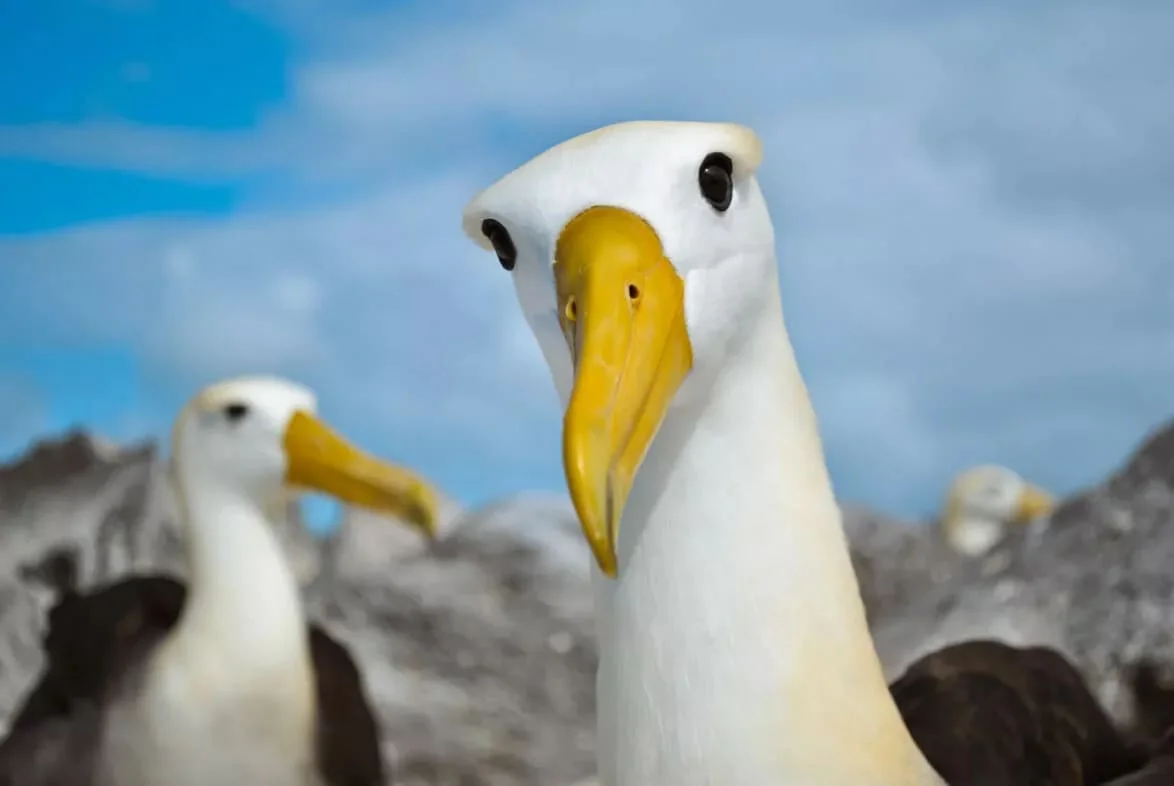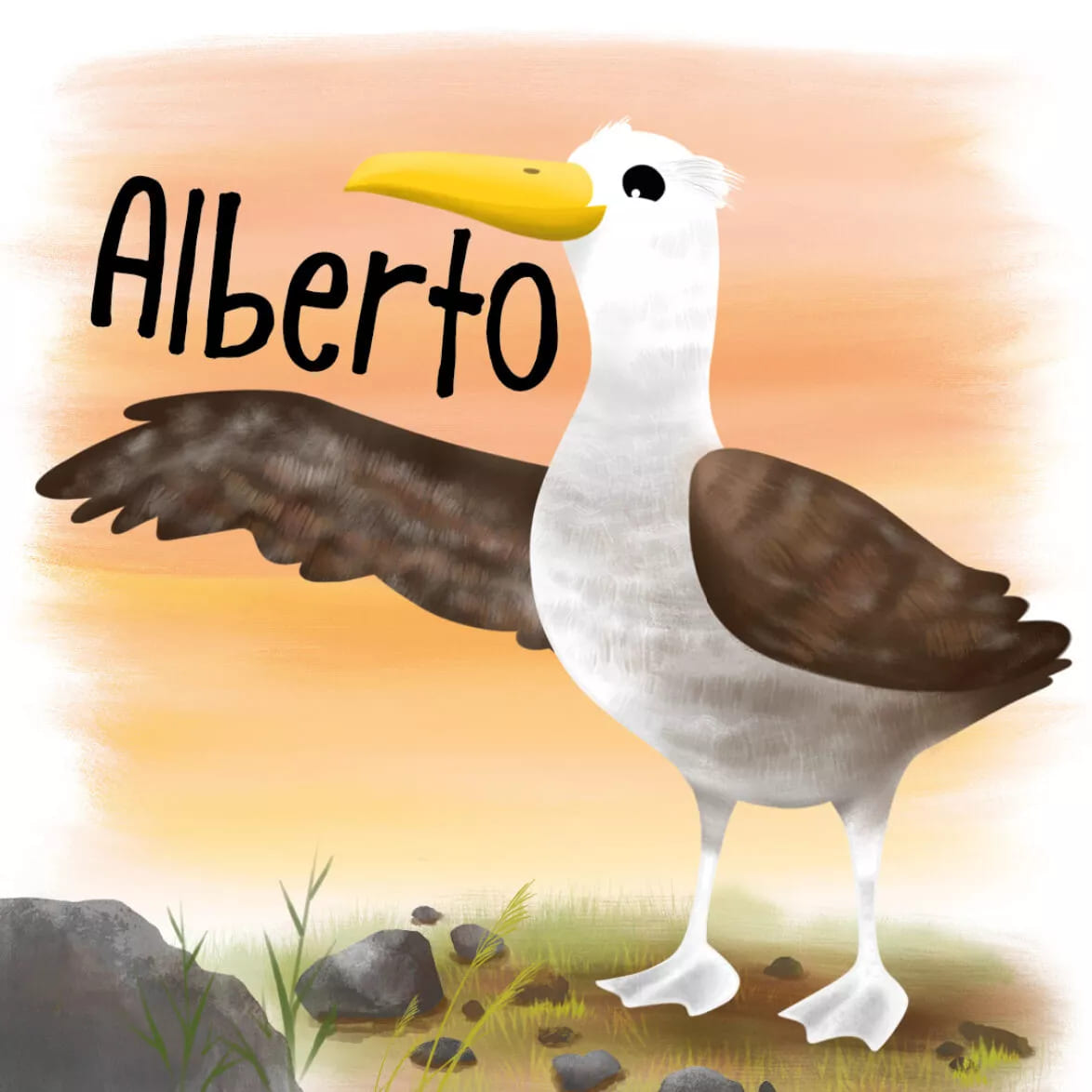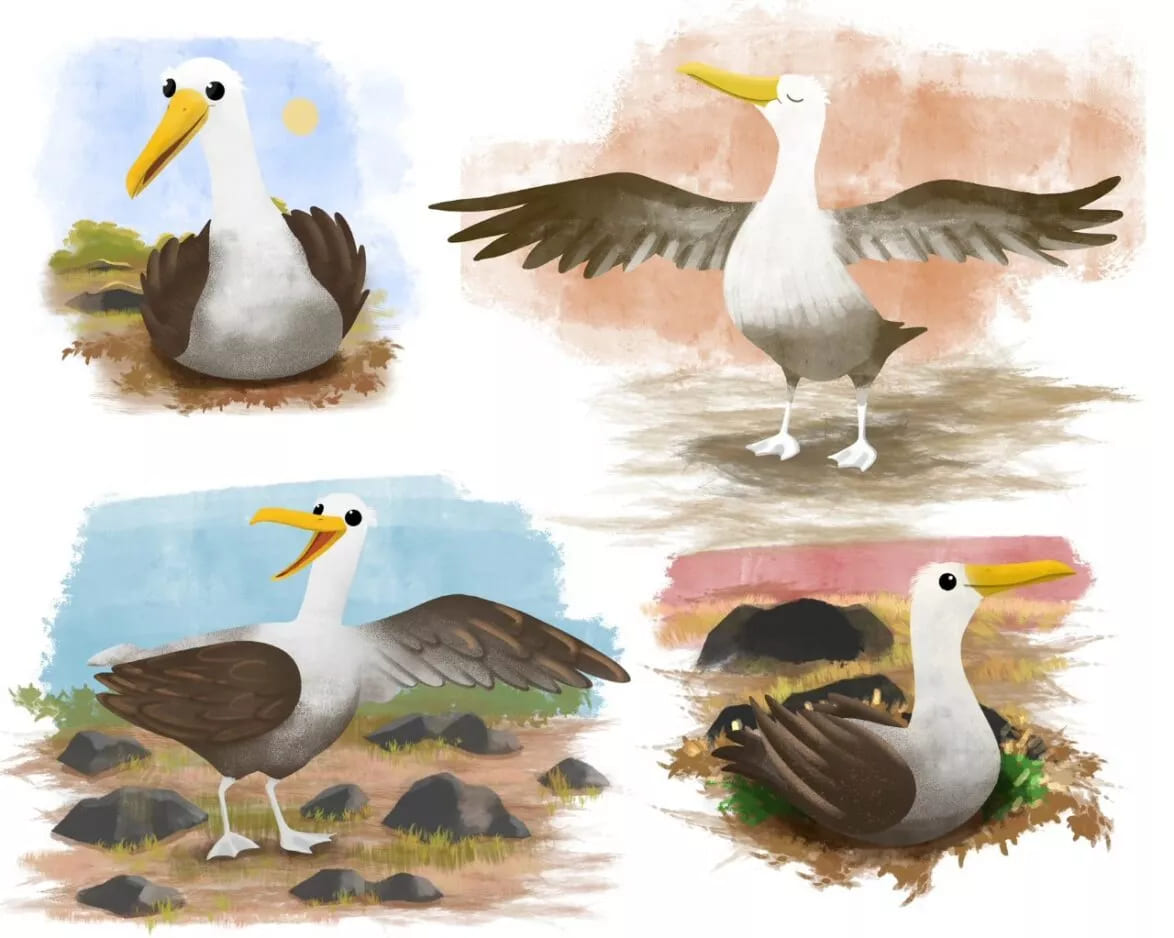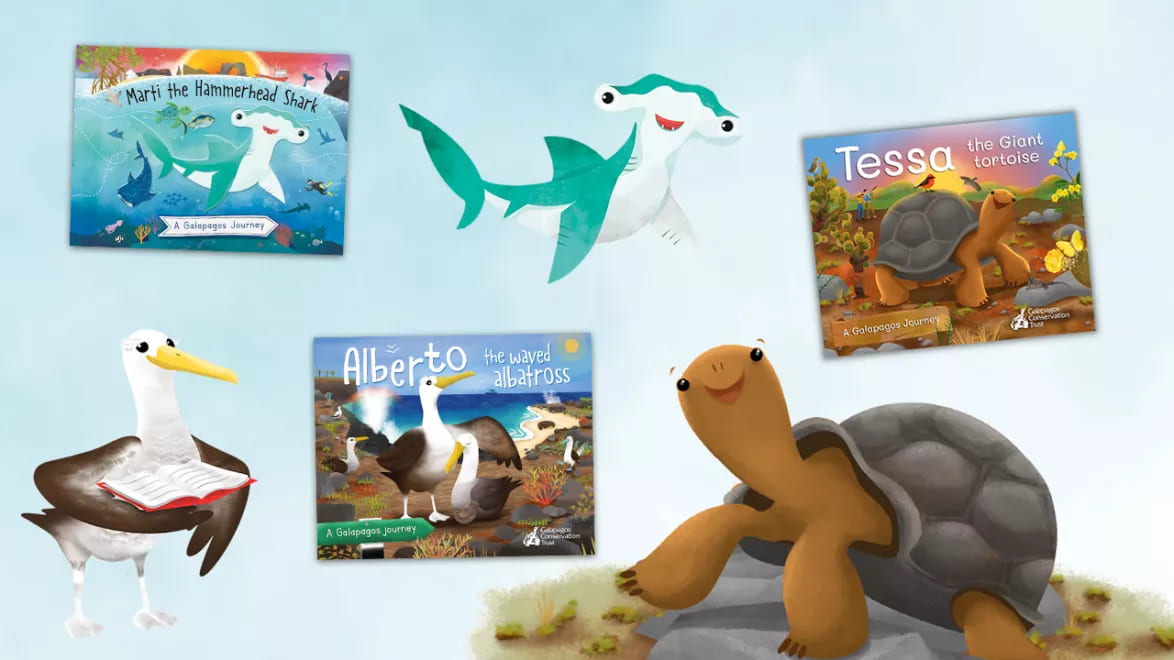
Meet the woman who brought Alberto the Waved Albatross to life | Travel News
Lisa Brown, the illustrator of Alberto, the wavy albatross, talks about her journey to bring this storybook to life and the role of art in inspiring environmental awareness and action.
We’re excited to share that our Alberto the Waved Albatross storybook has finally arrived! Join Alberto as he embarks on his greatest adventure, soaring across the ocean to reunite with his mate, Isabela, on Española Island. Together, they face the challenge of raising a chick while navigating numerous obstacles, including industrial fishing and plastic pollution.
Art has a unique ability to move us in a way that words alone often cannot. It has the power to evoke emotions and awaken the senses, fostering the motivation needed to act on behalf of the environment. Lisa Brown - illustrator of Alberto, the waved albatross, as well as Marti, the hammerhead shark, and Tessa, the giant tortoise - was asked about her experience transforming words into illustrations and the impact she believes art can have on both people and wildlife.

How do you think art can encourage people to connect with and protect wildlife?
Art is an incredibly powerful tool for inspiring people to engage with and safeguard wildlife. It appeals to our emotions and captures the beauty, uniqueness, and vulnerability of species in ways that facts and figures alone cannot. By bridging the gap between scientific knowledge and emotional connection, art can inspire individuals to take meaningful action to protect species and their ecosystems—which is the ultimate goal.
The relatable and expressive characters in Alberto the Waved Albatross create a sense of empathy, helping both children and adults form a personal bond with the animals and their habitats. Conservation is a complex topic, often involving numerous interconnected factors, and visual storytelling serves as an effective way to simplify and convey these important ideas.
What inspired you to collaborate with the Galapagos Conservation Trust on illustrating Alberto the Waved Albatross, Tessa the Giant Tortoise, and Marti the Hammerhead Shark?
I was drawn to working with the Galapagos Conservation Trust because of their commitment to preserving the extraordinary biodiversity of the Galapagos Islands. My passion for the Galapagos and its wildlife started at a young age, fueled by a close relationship with my grandmother, with whom I often watched nature documentaries. She would be thrilled to see my work with GCT, making these projects especially meaningful for me.
The Galapagos Islands are home to species found nowhere else on Earth, yet they face threats from climate change, pollution, and invasive species. By illustrating books like Marti the Hammerhead Shark, Tessa the Giant Tortoise, and Alberto the Waved Albatross, I hope to raise awareness about these challenges and highlight the importance of conservation. Seeing schoolchildren in the Galapagos enjoying the books and engaging with their messages is incredibly rewarding—I feel truly honored to be part of this initiative.

What is your process for turning an idea into a character?
Developing a character from a real species is a more methodical process than one might expect. It starts with thorough research to understand the species’ distinct physical and behavioral traits. I begin by studying numerous images and sketching the animal in its natural form.
Next, I simplify the animal into basic shapes—this makes it easier to depict it in different poses. I then adjust those shapes to emphasize its most defining features. For instance, in Tessa the Giant Tortoise, I focused on her massive domed shell, sturdy feet, and long neck, while also capturing her gentle, slow-moving nature. In Marti the Hammerhead Shark, I highlighted Marti’s sleek, unique body shape and gave her a friendly, curious expression to make her more relatable for children.
Alberto’s defining feature is, of course, his impressive wingspan, but his large body on land was also important to emphasize. I accentuated his broad chest and became particularly fond of the waved albatross’ distinctive tufty "eyebrows," which add a charming and quirky touch to his character.
How did creating the characters in Alberto the Waved Albatross compare to Tessa the Giant Tortoise and Marti the Hammerhead Shark?
I have to admit, Alberto was a bit more challenging to illustrate compared to Tessa or Marti! This is likely because albatrosses have such a stark contrast between how they move on land versus in the air. On the ground, they appear slightly awkward and top-heavy, but in flight, they are graceful and majestic. This contrast allowed me to explore a wide range of behaviors and poses, from beak fencing and feather preening to soaring peacefully at sunset and clumsily landing with a crash!
Each storybook has been a joy to illustrate, and I love tailoring each character’s visual and emotional attributes to fit their story. Alberto exudes majesty and elegance in the skies, while Marti the hammerhead shark embodies strength and agility for navigating the ocean. Meanwhile, Tessa the giant tortoise is depicted with a thoughtful, deliberate demeanor, reflecting her slow migration. Every character has a unique personality, and I aim to capture the essence of each species in a way that resonates with the audience.

How important is it to introduce children to environmental education through art and storytelling at a young age?
Engaging children in environmental education through art and storytelling is absolutely essential. Early exposure helps cultivate a lifelong love for nature and fosters a sense of responsibility for protecting it. Just as we learn language through imagery, we also learn what matters in the world through the themes of our early education.
By crafting captivating stories and endearing characters, we can inspire future generations to become environmental stewards—advocating for conservation and making choices that protect the planet. Art and storytelling provide an accessible, enjoyable way to teach children about nature, nurturing their curiosity and empathy—two key ingredients for a more sustainable future.
Check Our Suggested Tours:
- 7 days Itinerary MV Isabela II yacht - Galapagos cruise
- Galapagos 5 days cruise on board the Ocean Spray North and Central islands
- 4-Day Galapagos Cruise to Eastern Islands: Your Ultimate Exploration Experience
- 5 Day Galapagos Cruise: Your Ultimate Guide to Adventure and Wildlife
- Itinerary West Galapagos
- Deluxe Central & Southern Galapagos Islands Vessel Cruise Journey

